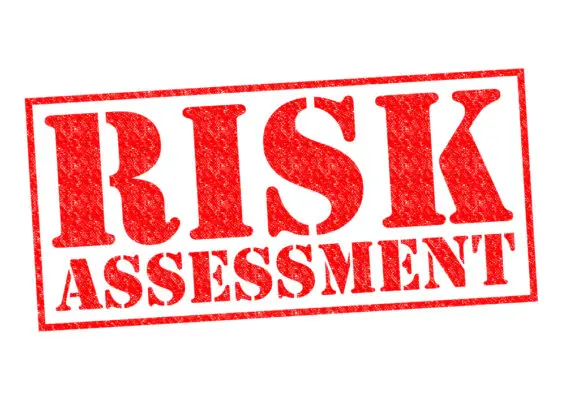Baseline risk assessment aims to identify potential hazards, assess their likelihood and potential impact, determine the level of risk, implement appropriate risk mitigation measures, and monitor the effectiveness of these measures.
This article provides a comprehensive definition of baseline risk assessment and highlights its importance in ensuring the safety and well-being of individuals, organizations, and communities.
The first step in baseline risk assessment involves identifying potential hazards through thorough research and analysis.
This includes considering external factors such as geographical location, climate conditions, and socio-economic factors that may contribute to the occurrence of hazards.
Once potential hazards are identified, they are assessed for their likelihood of occurring and their potential impact on human life, property, environment, or economy.
Based on this assessment, each hazard’s risk level is determined. This allows for the prioritization of risks based on their severity and enables the effective allocation of resources for mitigation measures.
These measures can include engineering controls, administrative controls, or personal protective equipment.
Finally, it is essential to continuously monitor the effectiveness of implemented risk mitigation measures to ensure that they remain relevant and efficient over time.
Regular reviews and updates should be conducted to account for changes in circumstances or emerging risks.
Using these systematic processes outlined within baseline risk assessment, organizations can proactively manage risks and create a safer environment for all stakeholders.

Identifying Potential Hazards
A comprehensive examination of the environment and activities is conducted to identify potential hazards to determine any factors that could pose a risk to safety and well-being.
This process, known as risk identification or hazard analysis, involves systematically analyzing each aspect of the environment and activities to uncover potential harm sources.
The aim is to identify all possible hazards that may exist within a given context, whether physical, chemical, biological, or psychological.
This requires careful observation, measurement, and evaluation of various factors such as equipment design, operational procedures, environmental conditions, human behaviour patterns, and potential interactions between these elements.
Using a thorough risk identification process through hazard analysis techniques like checklists, brainstorming sessions, or fault tree analysis, organizations can proactively assess risks and develop appropriate control measures to prevent accidents or mitigate their consequences effectively.
Assessing Likelihood and Potential Impact
Evaluating the probability and potential consequences is crucial in determining the likelihood and impact of potential risks.
This process, known as quantitative risk analysis, involves assessing the probability of an event occurring and the severity of its potential impact.
A risk assessment matrix or a risk register can facilitate this assessment. The risk assessment matrix categorizes risks based on their likelihood and potential impact, allowing for a systematic evaluation of each identified hazard.
The matrix typically includes four categories: low likelihood/low impact, low likelihood/high impact, high likelihood/low impact, and high likelihood/high impact.
Organizations can prioritize their mitigation efforts by assigning risks to these categories. This approach ensures that resources are allocated effectively and appropriate control measures are implemented to manage identified hazards.
Determining Level of Risk
Quantifying the level of risk involves carefully analyzing the probability and potential impact of identified hazards, allowing organizations to visually map out the severity and likelihood of each potential event.
This process is crucial in determining which risks require immediate attention and action. To aid in this analysis, various risk assessment tools can be utilized. These tools provide a systematic approach for identifying, evaluating, and prioritizing risks based on their likelihood and potential impact.
Additionally, organizations can implement risk management strategies to mitigate or eliminate identified risks. These strategies may include implementing safety protocols, conducting regular inspections and audits, providing employee training programs, or investing in protective measures such as insurance policies or backup systems.
Effectively determining the level of risk through comprehensive assessments and employing appropriate risk management strategies, organizations can minimize the likelihood of adverse events occurring and ensure the safety and well-being of their stakeholders.
| LikelihoodPotential ImpactLevel of Risk | ||
|---|---|---|
| High | High | Critical |
| High | Medium | Major |
| High | Low | Moderate |
| Medium | High | Major |
Implementing Risk Mitigation Measures
Implementing risk mitigation measures involves implementing various strategies and protocols to minimize or eliminate potential risks, ensuring the safety and security of all stakeholders.
To effectively implement control measures, organizations should consider the following:
- Identify and prioritize risks: Conduct a thorough assessment to identify all potential risks and prioritize them based on their likelihood and impact.
- Develop preventive measures: Implement proactive strategies such as training programs, safety protocols, and regular maintenance routines to prevent or reduce the occurrence of identified risks.
- Monitor and evaluate effectiveness: Regularly assess the effectiveness of implemented control measures by measuring risk reduction levels, monitoring incident reports, conducting audits, and seeking stakeholder feedback. This allows for necessary adjustments to be made to enhance risk mitigation efforts.
Organizations can significantly reduce the overall risk level by using these control measures and continuously monitoring their effectiveness while providing a safe environment for everyone involved.

Monitoring the Effectiveness of Risk Management
Monitoring the effectiveness of risk management involves regularly assessing the performance and impact of implemented control measures, allowing organizations to make necessary adjustments and improvements for enhanced risk mitigation.
Measuring risk reduction is a crucial aspect of this process. It involves evaluating how well the implemented measures have reduced the likelihood and severity of potential risks.
This can be done through quantitative methods, such as comparing pre- and post-implementation data, or qualitative methods, such as conducting interviews or surveys with stakeholders.
Using measuring risk reduction, organizations can determine whether their control measures effectively minimize risks and identify areas that require further attention.
Evaluating risk response is another important component of monitoring the effectiveness of risk management. This entails assessing how well an organization’s response strategies align with identified risks.
It involves evaluating whether the chosen response strategies are appropriate, timely, and effective in addressing the identified risks. Evaluating risk response may involve examining incident reports, conducting audits or inspections, or analyzing feedback from employees and customers.
Evaluating risk response, organizations can identify any gaps or weaknesses in their current strategies and make necessary adjustments to ensure a more robust approach to risk management.
Monitoring the effectiveness of risk management requires measuring risk reduction and evaluating risk response.
Frequently Asked Questions
What are the key steps involved in conducting a baseline risk assessment?
The key steps in conducting a baseline risk assessment involve the identification process, which includes: identifying hazards, assessing their likelihood and impact, determining the level of risk, implementing control measures, and monitoring and reviewing the effectiveness of these measures.
How can one identify all potential hazards during the risk assessment process?
To ensure that all potential hazards are identified during the risk assessment process, it is important to use comprehensive risk assessment methods such as brainstorming sessions, checklists, and expert consultations.
These methods help in systematically identifying and evaluating various types of hazards.
What factors should be considered when determining the level of risk associated with a hazard?
When determining the level of risk associated with a hazard, factors such as severity, likelihood, exposure, and vulnerability should be considered.
These factors help assess the potential harm and determine appropriate risk mitigation strategies.
Are there any legal or regulatory requirements to be considered while implementing risk mitigation measures?
Legal and regulatory requirements must be considered when implementing risk mitigation measures.
Compliance with applicable laws and regulations ensures that organizations meet their obligations and protect stakeholders from potential harm or liability.
How often should the effectiveness of risk management strategies be monitored and evaluated?
Risk management effectiveness evaluation frequency should be determined based on the specific context and industry requirements.
Regular monitoring and assessment are essential to ensure the ongoing efficacy of risk mitigation strategies.

Conclusion
Baseline risk assessment is a crucial process in risk management. It involves:
- Identifying potential hazards.
- Assessing their likelihood and potential impact.
- Determining the level of risk.
- Implementing appropriate risk mitigation measures.
- Monitoring their effectiveness.
Following this systematic approach, organizations can effectively identify and address risks to ensure the safety and well-being of individuals and the success of their operations.
Carefully analyzing and implementing risk management strategies, organizations can minimize the occurrence and impact of potential hazards.

Chris Ekai is a Risk Management expert with over 10 years of experience in the field. He has a Master’s(MSc) degree in Risk Management from University of Portsmouth and is a CPA and Finance professional. He currently works as a Content Manager at Risk Publishing, writing about Enterprise Risk Management, Business Continuity Management and Project Management.

